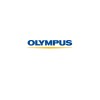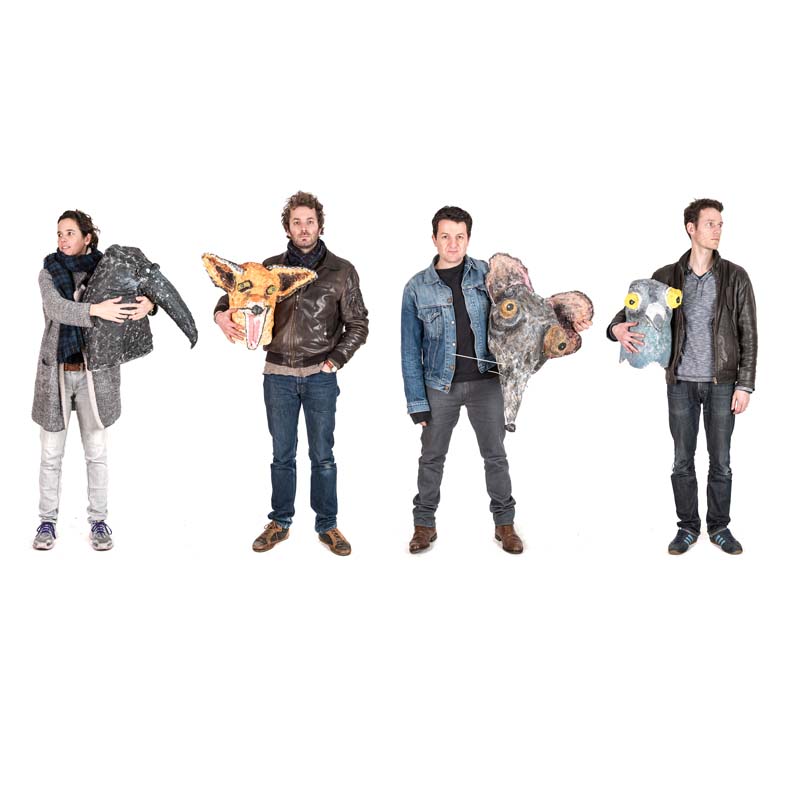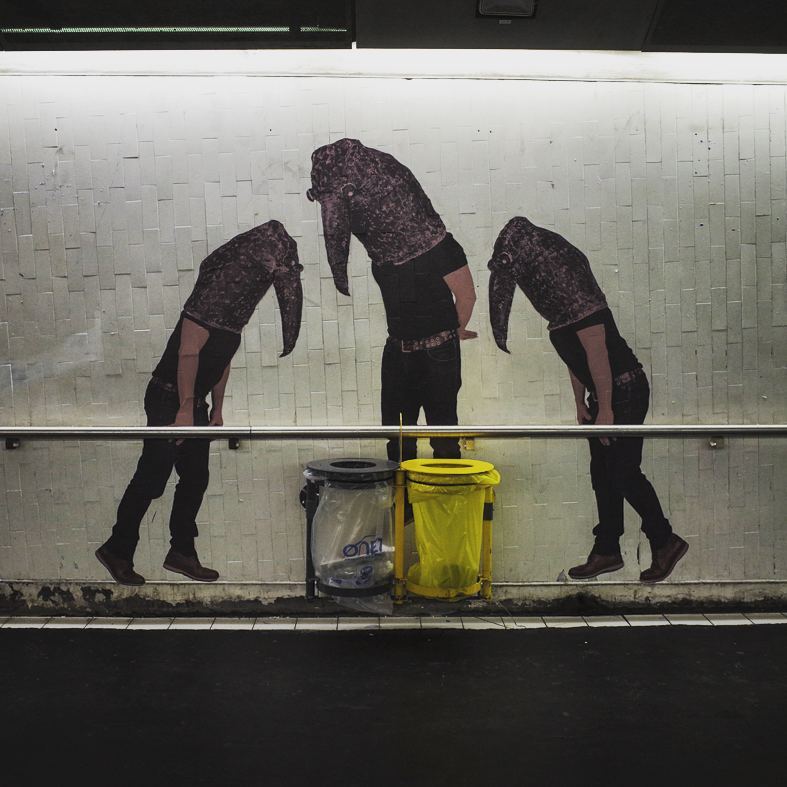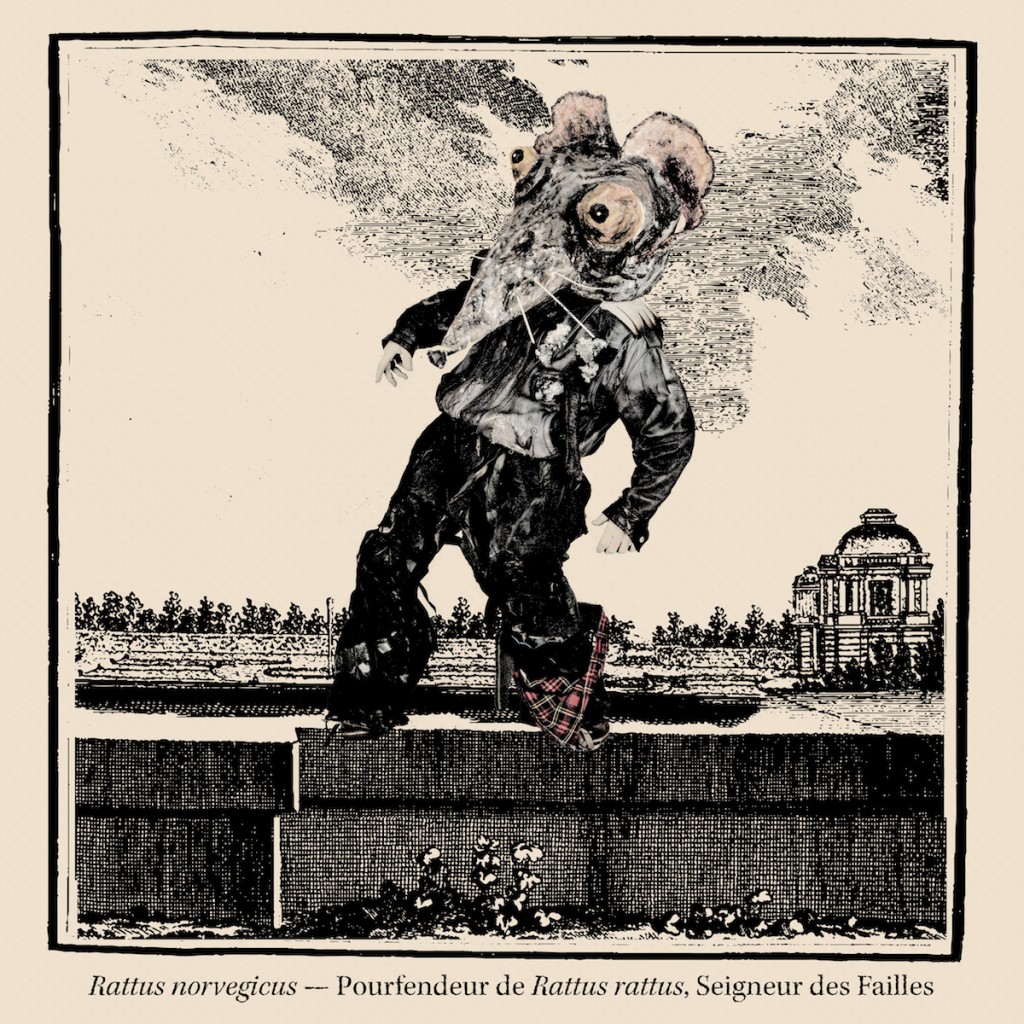" De l’origine des esprits "
France
2016Hors les murs
Sylvain Granjon, Aurelien Gabriel Cohen, Boris Rogez and Maud Bernos
The objective of this project is to invest two spaces within the Gare du Nord station with a collective photographic work. By basing itself on a scientific inventory of the present biodiversity in the station, in connection with several researchers of National Natural History Museum, we want to make these non-human inhabitants appear in the daily space of the travelers under the photographic shape of spirits and animal and plant totems.
This artistic proposal, centered on the presence of the alive in a space with strong human concentration, also leans on an ecological reflection, fed by the works of several anthropologists on the animism and the totémisme, to build an urban shape of photographic shamanism.
Performance of 26th of March: “the suitcase of Professor Louis Hippolyte Violette”
In a secondhand trade of the street Curial, we found the suitcase of Professor Louis Hippolyte Violette, big spirituality and author inevitably forgotten by the founding work of the shaman naturalism of the origin of the spirits. In this suitcase, besides the last volume known for the first edition of the book, for numerous photos, papers and diverse objects testify of the golden age of the scientific animism. For Circulation(s) Festival, the collective Périscope will expose enlargements of several illustrations of ” De l’origine des esprits ” from the Gare du Nord station and will present directly the result of its discoveries, on March 26th, to Centquatre, during the opening.
A fascinating dive in the thought and the intimacy of one most great spirits of its time.
Find the collective Périscope at Gare du Nord station in parallel with Circulation(s) Festival in 104 Paris.
In partnership with Olympus

About the artist
Périscope arose from discussions and from meetings, from the desire shared to question jointly the collective creation and the contemporary world, the consciousness that the common is something which is not obvious and that it belongs to us to invent an answer to our need to be together. With, in the disorder, some desires: question the creation, the work and the common life, make it in a participative and horizontal structure, and propose manners, less individualistic, of learn the art and the photography.
By means of projects conceived and realized together, we try to make the concrete experience of the collective creation. To explore what in us resists the pooling and what wishes for it, to refine the understanding of the ethical, esthetic and political implications of our work – and never forget what we hold.


